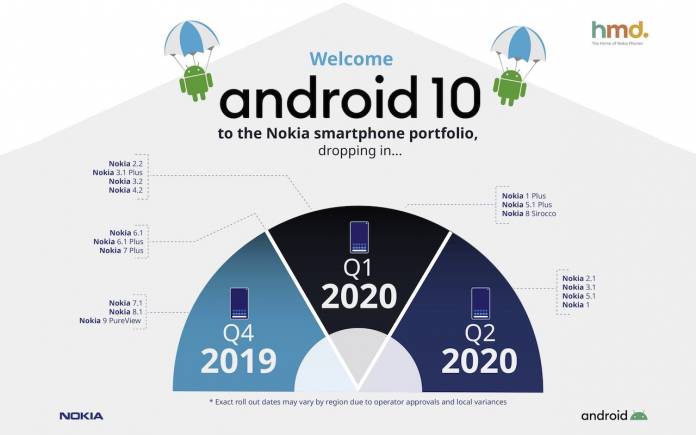
As with more top mobile OEMs today, there is no stopping HMD Global from releasing new Android phones. In fact, it has proven to be one of the more prolific ones, introducing new Nokia devices left and right since the brand’s resurrection back in 2017. There is no telling the numbers but we have a feeling all is well. HMD won’t be this confident if they are not making any money…or is it still part of a big marketing strategy?
When it comes to software updates, Nokia is also fast in rolling out Android Nougat, Oreo, and Pie to some of the latest phones. Android Q, or should we say Android 10, will be available by Q4. The good news was shared after Google made Android 10 official.
Android 10 for Nokia Mobile will be released before the end of the year. The first models to receive Android 10 in Q4 2019 are the Nokia 7.1, Nokia 8.1, and Nokia 9 Pureview. The Nokia 6.1, Nokia 6.1 Plus, and the Nokia 7 Plus will follow at the beginning of 2020.
Middle of Q1 2020, expect Android 10 to be ready for the Nokia 2.2, Nokia 3.1 Plus, Nokia 3.2, and Nokia 4.2. Also in the same quarter is another batch: Nokia 1 Plus, Nokia 5.1 Plus, and the Nokia 8 Sirocco. In the second quarter (Q2 2020), these four smartphones will get Android 10: Nokia 2.1, Nokia 3.1, Nokia 5.1, and Nokia 1.
A Nokia 5G phone is also scheduled to be unveiled in the second half of 2020 as another flagship phone. It won’t be like other 5G smartphones in the market today because the Nokia 5G phone will be within a $500 to $650 price range.
Some major features and improvements the Android 10 will bring to these Nokia phones are as follows: Gesture Navigation, Improved biometric authentication dialogs, Improved fallback support for device credentials, TLS 1.3 support, Wi-Fi network request API for peer to peer connectivity, Improvements to Wi-Fi high-performance and low-latency modes, Call screening and caller ID, Call redirection service API, Sharing audio input, Audio playback capture, Seekbar in MediaStyle notifications, and Thermal API. When it comes to imaging, expect Monochrome camera support, Dynamic Depth Format, High-Efficiency Image File Format, and Improvements in multi-camera.









